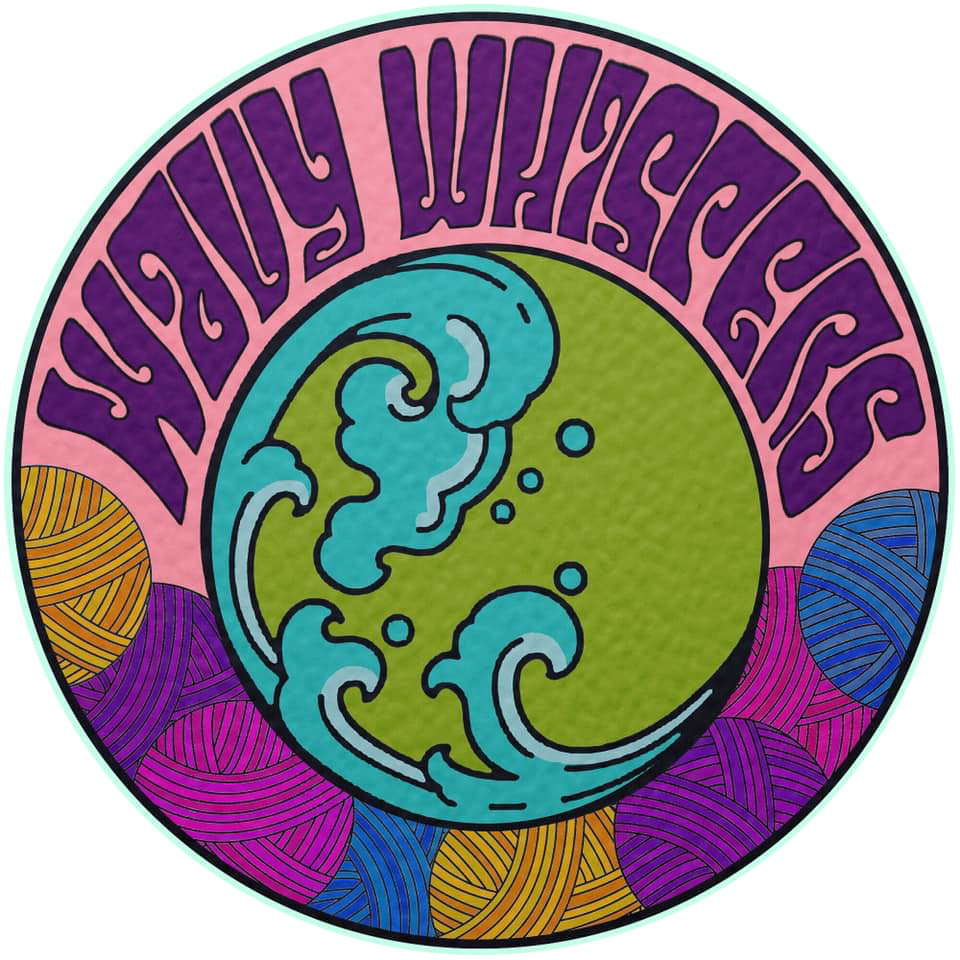Artist Statement
A brand born on the water through a love affair with nature, pattern and colour...
My art practice primarily involves the exploration of repetition, process, play, impermanence and control in relation to positivity, curiosity, acceptance and healing. I find the connectivity concerning order and chaos very intriguing, as well as the relationship present between the mind and body. An obsession with the cyclical nature of circles, holes, loops, spirals and grids provides me with endless inspiration. Personal experiences with mental health, anxiety and depression in particular, both initiated and continue to fuel these interests.
Experimenting with textile techniques - predominantly crochet - successfully enables me to enter a meditative state and simultaneously to investigate that outlined previously; The resulting work displays an exploration of the benefits which surrendering to the present can provide, whilst forming a collection of peaceful moments to be shared with and experienced by an audience. I find drawing, painting, collage and writing to be therapeutic practices also, these methods of creation play a supportive role for me and my textile work; almost like warm-up/cool-down activities.
Blind drawing (the act of drawing from observation without looking at the work being created) is of significant importance to me and my practice as I admire that it creates pieces free from pre-conceived ideas of what a particular subject should look like, you’re only drawing what you can see and nothing is interfering with that process.
All of the materials collected for use throughout my practice are found, secondhand or otherwise ethically sourced. My aim is to elevate things which would most likely have been discarded if it wasn’t for my intervention, to transform them into something valuable and consequently highlight the importance of contemporary environmental issues such as that which is waste culture.
The pressure of bigger being considered ‘better’ previously led to me exclusively working very small, however, a realisation that opposites are entirely interdependent inspired me to produce both large and intimate works alongside one another. The familiar scale of the smaller work is a means to express a certain sensitivity, drawing the viewer in closer to experience the details of a piece, and to demonstrate that there is strength in subtlety; The larger work provides contrast and a sense of balance. Additionally, my bigger pieces aid me in expressing the fact that I wish to be seen and heard.
I like to experiment with the site-specific incorporation of existing architecture. In certain spaces and with larger artworks or murals, this method of installation comes naturally. The existing architecture plays a similar role to the found objects used at smaller scales, where I’m locating a starting point for myself and additionally encouraging an audience to pay attention to that which usually goes unnoticed. I’ve found, however, that when exhibiting smaller pieces (already incorporating found objects) I prefer to keep the way in which they’re presented fairly simple. When these more intimate pieces are hung on walls, like a traditional painting might be – at uniform heights and with equal spacing, the focus remains on the work itself and its details. Despite favouring this simplicity when it comes to smaller scales, sometimes installing these pieces at unconventional heights (usually lower than you’d expect), again, encourages an audience to experience the compositions close up. Both methods of installation prompt the consideration of the relationship between the work and the space that it occupies.
I'm trying to refrain from compartmentalising my interests as much as I used to and am currently experimenting with the combination of my art and design practices in order to aid that progression. I view my artworks as moments of peace to be re-lived by an audience and my apparel/home decor in a similar way; I’d like people to feel that they can express themselves through my work and be soothed/comforted while wearing it or welcoming it into their personal spaces.
